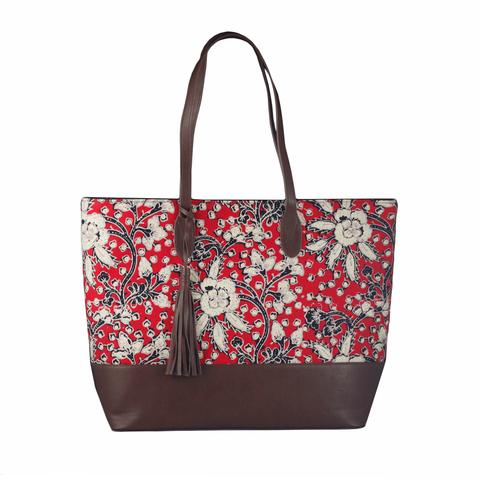American Rubber Band Makers in a Bind
The elasticity of rubber supply
Every year, Americans buy 30 million pounds of rubber bands. You may have one sitting on your desk right now, or you may have been one of the 807,000 curious viewers who watched Buzzfeed use 686 rubber bands to explode a watermelon live on Facebook (since viewed over 11 million times).
Although the cotton industry coined the tagline “the fabric of our lives,” our daily routines wouldn’t be possible without this elastic polymer of our lives: rubber. Rubber is known for both its elasticity and toughness, and is a pivotal ingredient in a number of household products including car tires, pencil erasers, latex gloves, tennis shoes, rubber bands, and more.
Though rubber is prominent in the products we use daily, the United States is not a producer of natural rubber and depends heavily on imports from other countries for its supply of it. In 2016, the United States imported $1.3 billion worth of natural rubber, second only to China as the world’s largest importer. In response to shortages of natural rubber during World War II, the United States developed and became a major manufacturer of synthetic rubber.
Trade with other nations in natural rubber combined with production in synthetic rubber has allowed Americans the luxury of not having to question their rubber supply. Yet, a new trade petition by America’s largest rubber band manufacturer shows that a product known for its flexibility can cause trade tension.
Where do we get our rubber?
Most natural rubber comes from the Hevea Brasiliensis tree which originated in South America. This “rubber tree” only grows in the certain rainy areas of the tropics and subtropics. Trees are then tapped to extract a milky fluid from the inner bark, called latex.
Latex is mixed with formic acid, which creates rubber crumbs resembling milk curds. The rubber crumbs are washed, dried and compacted into blocks or sheets before being shipped around the world. Around 10 percent of natural rubber is shipped in latex form, so it can be used for dipping products like surgical gloves and toys.
Today, Southeast Asia produces over 90 percent of the world’s supply of natural rubber. Indonesia, Thailand, Vietnam and Malaysia top the list of international exporters. The biggest importers include China, the United States and Japan.
If you can’t grow it, reinvent it
The United States doesn’t have the type of climate needed to produce natural rubber. Shortages during World War II forced the country to seek a creative alternative. Rubber has extreme strategic importance to the U.S. military for production of airplanes, tanks, jeeps, footwear, clothing and other equipment. So, when fighting in WWII cut off America’s link to Southeast Asia in the 1940s, dwindling rubber supplies became a matter of national security.
As WWII raged on, the U.S. government, top university researchers, and rubber industry titans – including Goodyear and Firestone – put their minds and resources together to create a viable synthetic rubber substitute, a rubber recipe dubbed GR-S (Government Rubber-Styrene).
The program was so successful that the U.S. synthetic rubber industry’s output increased from 231 tons a year in 1941 to a whopping 70,000 tons a month in 1945. It didn’t stop there. The American Chemical Society says 70 percent of rubber used for manufacturing today is synthetic and a direct descendant of the GR-S recipe created during WWII.
Despite synthetic rubber’s many uses, natural rubber is still used to make some products — including rubber bands — due to its superior elasticity.
American rubber band makers say they are in a bind
Fast forward 75 years and the issue is no longer a rubber shortage, but rather claims that the world is producing too many rubber bands.
In January 2018, Alliance Rubber Company filed a trade petition with the federal government to penalize rubber band manufacturers in China, Thailand and Sri Lanka for allegedly “dumping” subsidized products in the U.S. market at unfair prices. The Hot Springs, Arkansas-based company says cheap imports of rubber bands from these countries is making it difficult to compete and is threatening the jobs of its more than 150 American employees.
U.S. industries can petition the government for relief in the form of new import taxes (“anti-dumping duties”) under the Tariff Act of 1930 if competing imports are sold in the United States at less than fair market value. They can also seek import taxes to offset subsidies provided to foreign companies by their governments (“countervailing duties”).
Last year, the United States imported an estimated $4.9 million, $2 million, and $12.1 million worth of rubber bands from China, Sri Lanka, and Thailand, respectively. Alliance Rubber Company says the governments of China, Thailand and Sri Lanka are providing their rubber industries with monetary and tax incentives, giving their manufacturers an unfair advantage over American manufacturers and enabling them to sell rubber bands at lower prices in the United States.
Based on an industry petition, the U.S. Department of Commerce has agreed to investigate whether rubber bands are being dumped and/or unfairly subsidized. The U.S. International Trade Commission must also decide if U.S. industry and employees in the petitioning industry are being harmed as a result. If the answer is yes on both fronts, the United States can decide to impose tariffs on rubber band imports from the three countries in question.
Using trade remedy laws to squeeze out “unfair” competition
Alliance Rubber Company is just one of many U.S. companies currently petitioning the government for import relief. The Commerce Department has characterized trade enforcement as “a prime focus” of the Trump administration. The Department of Commerce reports it has initiated 102 antidumping and countervailing duty investigations between January 20, 2017 at the start of Trump’s administration, through February 21, 2018 – a 96 percent increase from the 52 investigations initiated over the prior year.
There is a well-defined process under U.S. trade remedy laws that needs to be undertaken before we’ll know the outcome of the ongoing rubber band dispute. Until then, we can rest assured that it takes 686 rubber bands to explode a watermelon. We’ll just have to wait and see if it takes $19 million worth of rubber band imports to squeeze new import tariffs out of our trade remedy laws.





